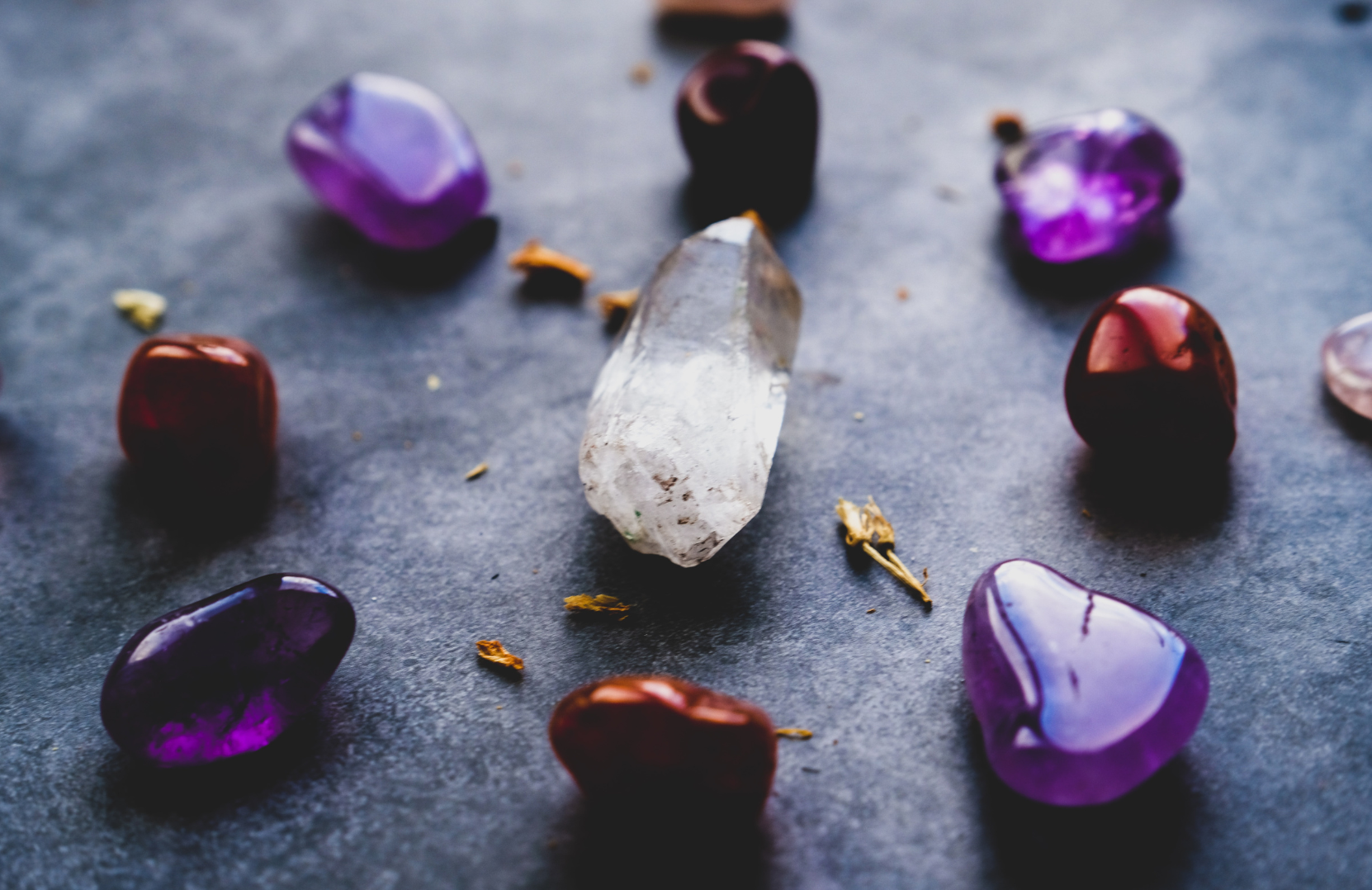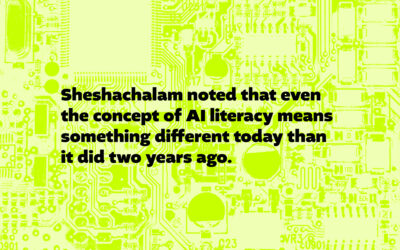Jewelry is expensive, especially on a student’s budget. Whether you’re looking to accessorize yourself or get your special someone something special, there are more affordable and unique options than diamonds or cubic zirconias. Many trendsetters have begun to sway away from mainstream jewelry options. To help navigate the seemingly endless selection of stones and gems, partnering with a trustworthy expert is important. I spoke with three geologists and a gem dealer to find some alternative gemstones that’ll work for you.
“What a geologist finds unique or valuable is not necessarily aligned with…what people that look for jewelry would find,” says Scott Melnyk, a Physical Sciences Department sessional instructor at MacEwan University. From ammolite to moissanite, garnets to opals, these geologists and one gem dealer prove there is a gem for anyone. Sure, a gemstone is an investment, but with the right tips and tricks, finding a gem that speaks to you, at a price that speaks to your wallet, is possible.
Well, what is a gem?
“Shiny!” Physical Sciences Department sessional instructor Roy Coulthard jokes. “(A gem is a) really well developed mineral specimen.”
To Avi Rahmanim, a second-generation jeweler and gem dealer, a gem is “any sort of mineral that…holds a value and can be made into something or just admired for what it is, for its own beauty.”
Meanwhile, Cate Larsen, a geo-communicator otherwise known as @groovygeologist on TikTok, says, “A gem is something that people put value on. So not all gems are minerals and not all minerals are gems.”
Know your Mohs!
Before you start on your gemmological escapade, you’ll need to know about the Mohs Hardness Scale. Hardness is “one of the fundamental qualities to a gem. The harder it is, the less wear it will endure,” Melnyk explains. The Mohs Hardness Scale describes the “ability of a stone to withstand scratches…the higher the number, the harder the mineral.” For instance, diamonds are a 10 on the scale. “Nothing can scratch it,” Rahmanim points out. “If I were to take a sapphire and rub it against it as hard as I can, then nothing would happen to the diamond,” he adds. “That doesn’t mean that the diamond is indestructible.”
What’s trending?
One fateful day, Larsen was scrolling through Pinterest looking for inspiration for her own engagement ring. Out of the alternative gemstones, one caught her eye but for the wrong reason. Although Fluorite is a beautiful gem with colour banding, it has a hardness of four. This means that the gem can chip easily, making it a less desirable option for rings.
This stirred her to begin her short TikTok series on alternative engagement rings. It quickly gained traction, with her first video racking up over 15 million views. “There was definitely a desire for this information and I can see that in my own comments,’’ she says.
Both in-store and online, Rahmanim confirms he has seen an uptick in popularity for alternative engagement rings.
Diamonds might not be your best friend
It’s no secret that diamonds are hard — hard enough to shatter your piggy bank. “I think the value of diamonds is heavily inflated by market dynamics,” Melnyk says. Coulthard admits that diamonds have a “truly remarkable luster that we call adamantine.” Despite this, excessive and exorbitant are two words to describe a geologist like Coulthard’s opinion on the gem.
“The diamond industry was almost a monopoly until the early 21st-century, through De Beers. De Beers was started by Cecil Rhodes and Cecil Rhodes was a bad man…he’s made some fabulously disgusting statements about using slave labor available in Southern Africa to, you know, enrich the British empire
and his company,” Coulthard says. “Diamonds themselves became the go-to engagement ring because of the De Beers 1947 ‘A Diamond is Forever campaign’…now you can get a De Beers lab-made diamond made in Oregon for quite a bit less than the price of real ones, but you know, maybe they’re not as forever.”
Dr. Melnyk also suggests artisan-created diamonds, a “fascinating technology that is becoming increasingly popular, and provides a….less expensive, conflict-free alternative to diamonds.” Take moissanite for example, a gem made of carbon and silicon with a hardness of 9.5. “Even less expensive than that would be white topaz,’’ Melnyk adds.
Colour lovers are in luck. “Both moissanite and topaz are prone to having impurities in them which gives rise to all sorts of different colours… you could find them in blue, in pink, in all sorts of stuff,” he notes. “For topaz, very deep blue is rare but a lot of times, you can have a light blue topaz and it gets heat treated to give it more of a deeper blue colour.”
“Have you heard of Herkimer diamonds?” asks Larsen. Herkimer Diamonds are a less expensive diamond alternative found upstate in Herkimer, New York. Don’t let the name and similar luster fool you. “There’s a lot of tourism surrounding the misuse of the word diamond,” she regretfully points out. Unlike its carbon counterpart, Herkimer Diamonds are actually a double-terminated quartz crystal with a hardness of 7.5.
So, what does a geologist find valuable?
“To me, it’s a rock with a story,” says Melnyk. “And oftentimes, a rock with a story could look boring to the average person.” Where would a geologist put these rocks with tales? Coulthard has a suggestion: “Gems look much nicer in your display cabinet than they do decorating somebody, but that’s just me.” Larsen says she doesn’t usually wear her rocks and minerals. In her experience as a geologist, she finds it has been “hard to make jewelry with the things we like that (don’t) look tacky.”
However, if these three geologists did choose to decorate themselves or their loved ones with a gem, a common favorite would be Garnets. Both Coulthard and Larsen say they find the garnet family underrated. As defined by the Gemological Institute of America, garnets are a group of closely related minerals. Coulthard is happy to highlight Uvarovite garnet as one of his favorites. It is a vibrant green, Jolly Rancher-esque gemstone. He chuckles, “I sort of love the notion, almost like those kids’ candy rings with the giant sugar gem on it. A garnet left to its own devices, under the right conditions, would grow into a twelve sided dodecahedron. So I love the notion, even though it’s so impractical, of somebody running around with a ring with this giant, twelve sided garnet.”
Similar to sapphires, garnets are versatile, making them suitable gems for any birthstone. “They come in virtually every single colour, and almost every single price point as well,” says Rahmanim. In his store, a red pyrope garnet might sell for $10 a carat, while a tsavorite garnet, a gem so green it rivals emeralds, might sell for $2500 to $3000 a carat.
One of the most popular alternative gems last year was blue sapphire. It is part of the mineral family of corundum, number nine on the hardness scale, Princess Diana’s engagement ring, and Avi Rahmanim’s favorite gem. “Blue sapphires… they’re probably our number one seller and have been for a while,” says the gem dealer. If you’d like to keep your purchase within the corundum family, try a ruby. Fun fact, the iconic, deep ruby red color is thanks to a trace element called chromium, meanwhile the trace elements of titanium and iron colour sapphires blue. For some corundum closer to home, look for Montana sapphires, characterized as having a silvery wash to their colouring. They’re mined in, you guessed it, Montana.
If you’re looking for a local stone, Coulthard highlights our friendly neighbourhood gemstone. “Alberta’s gemstone is something called ammolite, and ammolite is actually a piece of fossil shell of an ammonite.” These ancient mollusks, ammonite, died off around 66 million years ago, leaving behind their Alberta-exclusive gifts. Over time, their shells have become organic gemstones, dazzling with glittering flashes of colours like reds, greens, and yellows. The city of Lethbridge just couldn’t resist those shiny old shells; they actually designated ammolite as the city’s official gemstone in 2007.
Melnyk’s favourite gem is opal, a uniquely iridescent gemstone. “Because it is hydrated quartz, it is very prone to cracking so that makes it not as desirable for a piece of jewelry.” Hydrated opals are called hydrophane, they absorb water or oils. This makes the opal less stable, but also less expensive, should you ever need to replace it.
Many hydrophane opals are mined in Ethiopia. For non-hydrophane opals, take a short trip across the Indian Ocean to Australia. Here you’ll find the very rare lightning ridge black opals. They are more stable than hydrophane opals, and are distinguished through their dark body and vibrant splotches. “It’s honestly one of the most beautiful gems — it’s like you’re looking at a galaxy within a gemstone,” Rahmanim gushes.
The rise of alternative gems does come with risks for buyers. “It’s not a regulated industry,” warns Coulthard — buyers should be on the lookout for trade names. Larsen uses the lovely peach moonstone as an example. “Peach moonstone is one of the most common minerals in the world; it’s called orthoclase. That’s the pink in your granite countertop…but when you put a fancy name on it, suddenly it’s a different mineral in everybody’s minds and it’s so much cooler and so much more marketable…. If you search for orthoclase, you’ll have a better price than if you search for peach moonstone.”
“I would strongly advise doing your homework,” says Coulthard, staying true to his instructor roots. To research before you buy, he suggests the International Gemological Society (IGS) website. Offline, Larsen recommends partnering with a jeweler you trust. Rightly so, she values transparency on the gem’s origin and ethical mining history. Rahmanim vouches for local jewelry stores. “A lot of them, they’re very generational.” He can speak to the value of years of gem knowledge passed down through his family business.
All in all, a gem purchase is personal and it should be something that has significance to you specifically. Your choice doesn’t have to be complicated. Rahmanim lays it out plain and simple: “It’s just how it makes you feel, I would say… Just buy something that looks nice.”





0 Comments